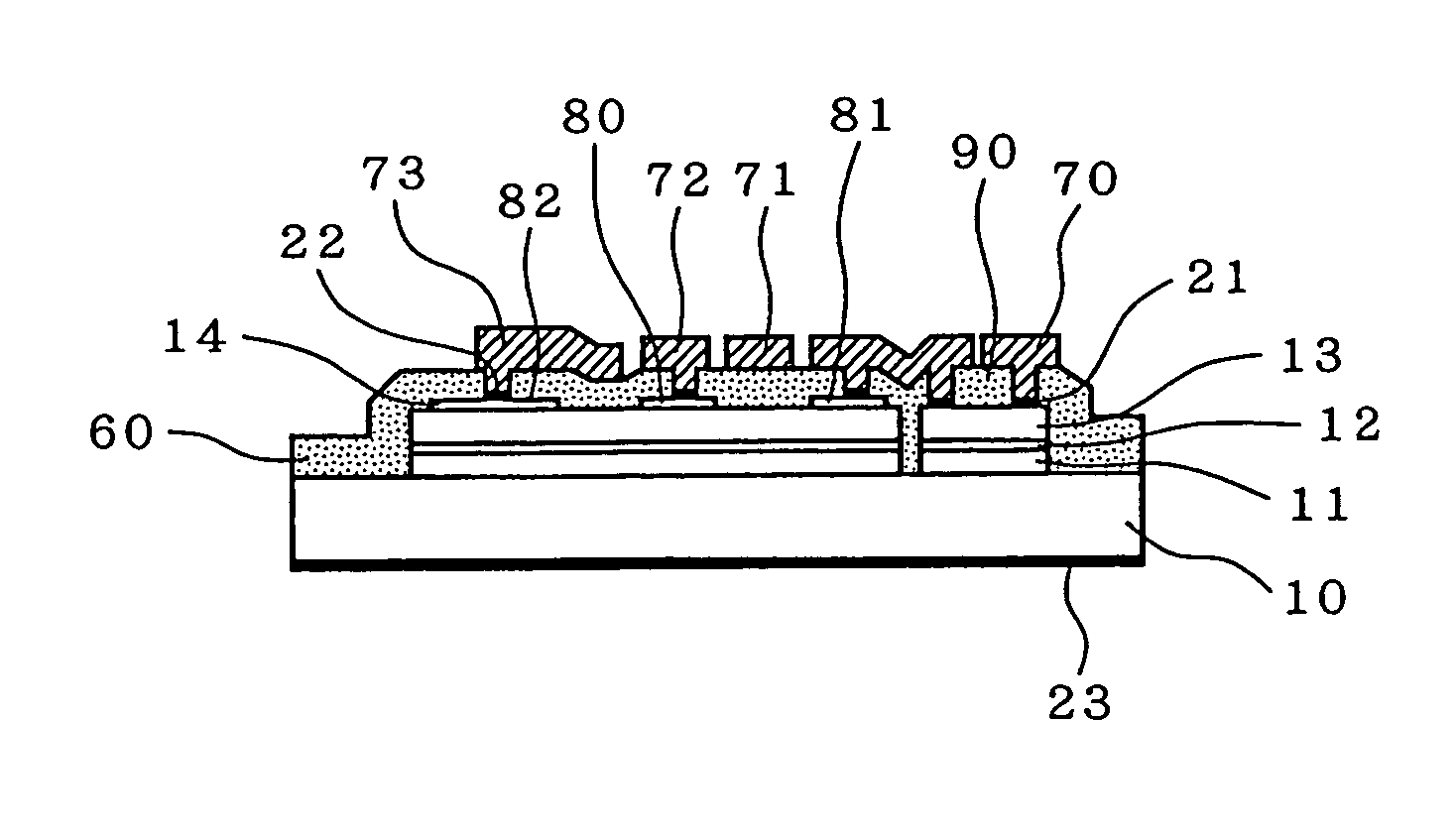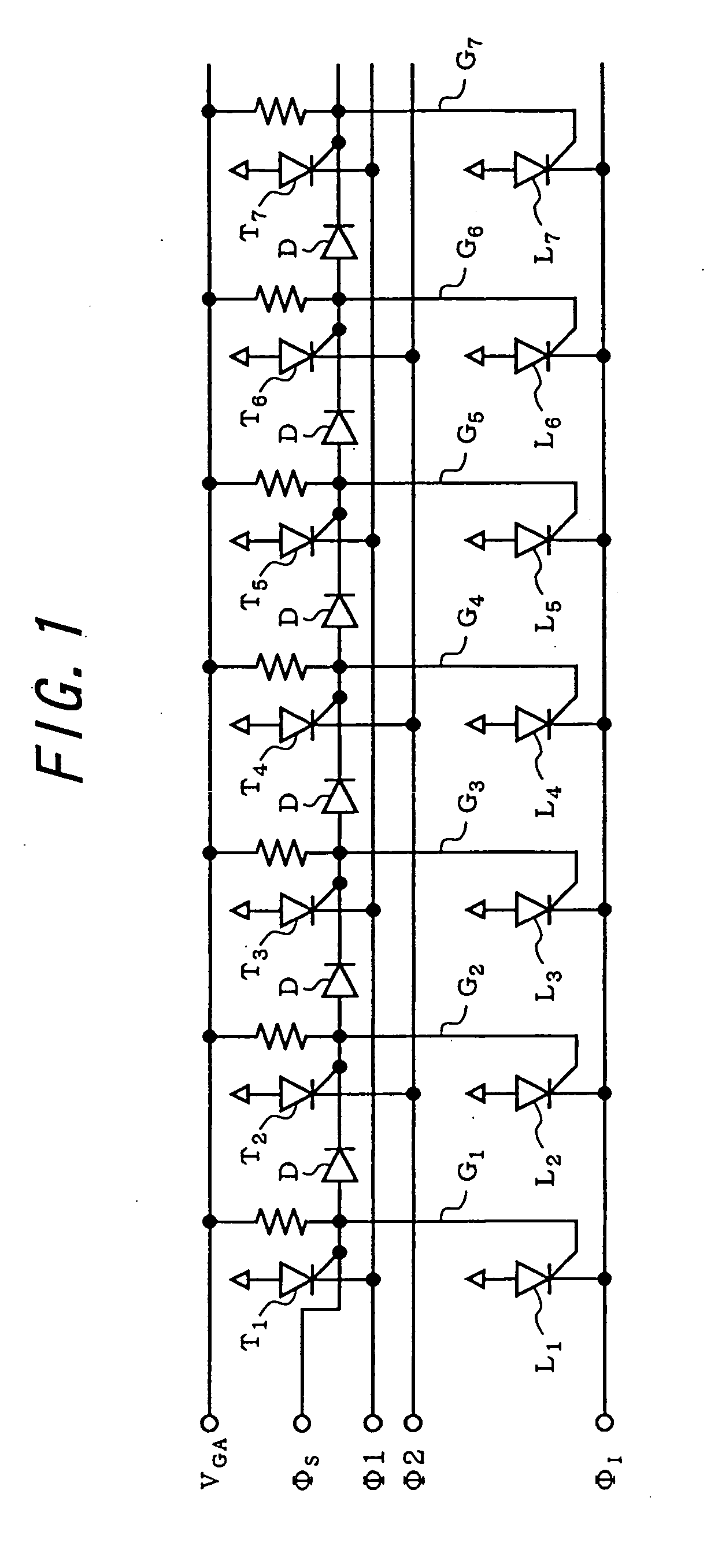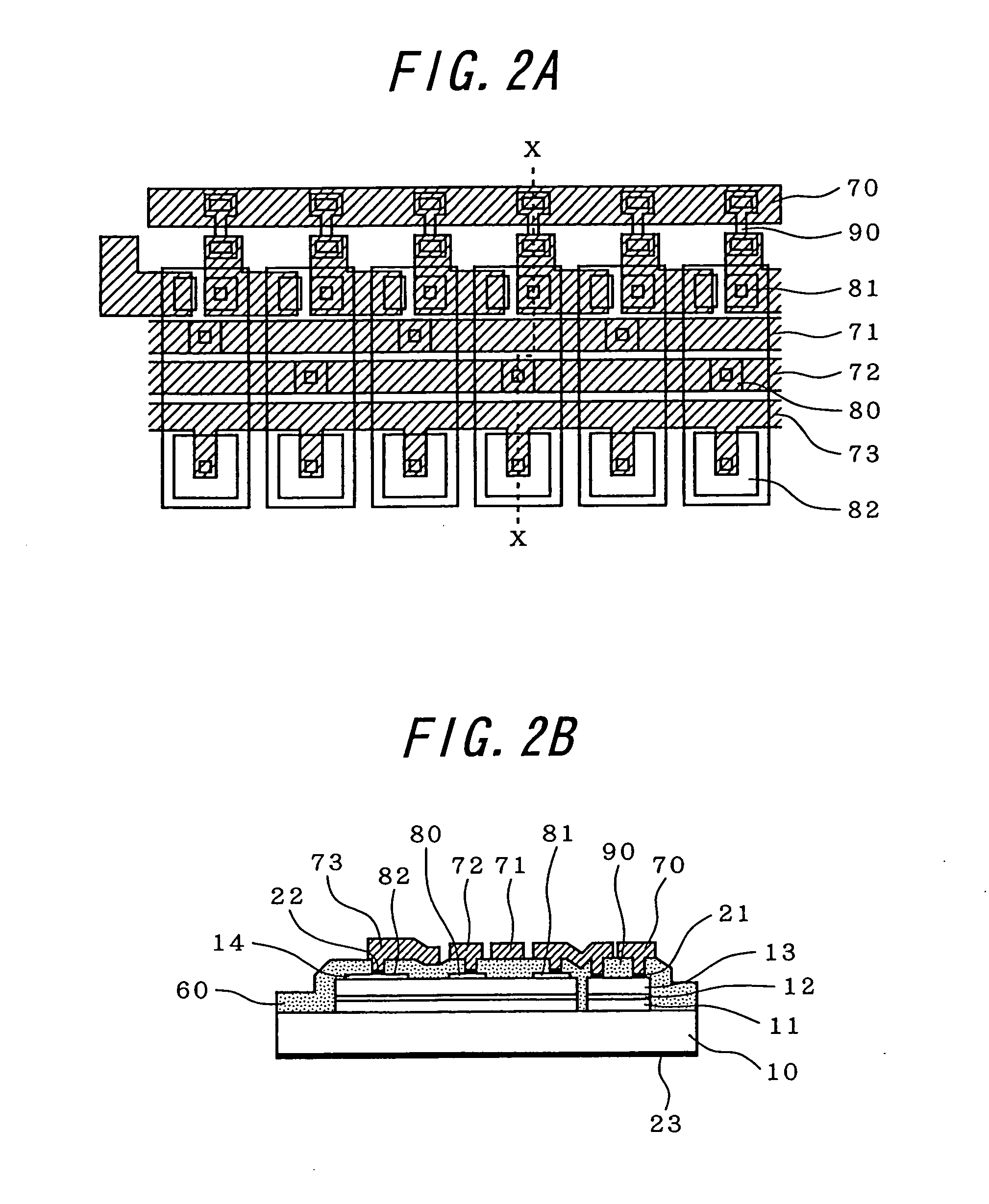Light-emitting device having pnpn structure and light-emitting device array
- Summary
- Abstract
- Description
- Claims
- Application Information
AI Technical Summary
Benefits of technology
Problems solved by technology
Method used
Image
Examples
embodiment 1
[0052] The present embodiment is directed to a light-emitting element having a schottky contact terminal on a gate layer of a PNPN-structure. A device structure of a light-emitting element formed in a chip is shown in FIG. 3 in which FIG. 3A is a plan view and FIG. 3B is a cross-sectional view taken along X-X line in FIG. 3A. On a first conductivity-type of GaAs substrate 10, there are stacked a first conductivity-type AlGaAs epitaxial layer 11, a second conductivity-type AlGaAs epitaxial layer 12, a first conductivity-type AlGaAs epitaxial layer 13, and a second conductivity-type AlGaAs epitaxial layer 14 in this order to form a PNPN-structure. A light-emitting thyristor is fabricated using this PNPN-structure.
[0053] The light-emitting thyristor comprises an ohmic electrode 21 formed an the first conductivity-type AlGaAs layer 13, an ohmic electrode 22 formed on the second conductivity-type AlGaAs layer 14, and an ohmic electrode (a common electrode) formed on a bottom surface of ...
embodiment 2
[0066] The present embodiment is directed to a self-scanning light-emitting element array using a schottky barrier diode as a coupling diode. FIG. 6 shows a circuit diagram of the self-scanning light-emitting element array, which is the same as the circuit diagaram in FIG. 1 except that the coupling diode D is replaced by a schottky barrier diode SB.
[0067] Referring to FIGS. 7A and 7B, there is shown a device structure of the diode-coupling self-scanning light-emitting element array formed in a chip. FIG. 7A is a plan view and FIG. 7B is a cross-sectional view taken along X-X line in FIG. 7A. On a P-type GaAS substrate 10, there are stacked a P-type AlGaAs epitaxial layer 11, a N-type AlGaAs epitaxial layer 12, a P-type AlGaAs epitaxial layer 13, and a N-type AlGaAs epitaxial layer 14 in this order to form a PNPN-structure. A light-emitting thyristor is fabricated using the PNPN-structure.
[0068] In the figures, reference numeral 21 designates an ohmic electrode for the P-type AlGa...
embodiment 3
[0070] The present embodiment is directed to a self-scanning light-emitting element array in which the start pulse φS terminal is deleted in the self-scanning light-emitting element array of the embodiment 2, thereby decreasing the number of bonding pads on a chip. In the circuit of FIG. 6, the start pulse terminal φS is deleted, and then the function thereof is realized by the clock pulse terminal φ2.
[0071]FIG. 8 shows a circuit diagram of this embodiment. In this case, the gate of the switch element T1 is connected to the clock pulse terminal φ2 via a schottky barrier diode 91 for forming a start pulse. The clock pulse φ2 is supplied to the gate of the switch element T1 as a start pulse via the diode 91.
[0072] The self-scanning light-emitting element array uses a schottky barrier diode as a coupling diode in the same way as the embodiment 2, so that the operation by lower power supply voltage may be realized.
PUM
 Login to View More
Login to View More Abstract
Description
Claims
Application Information
 Login to View More
Login to View More - R&D
- Intellectual Property
- Life Sciences
- Materials
- Tech Scout
- Unparalleled Data Quality
- Higher Quality Content
- 60% Fewer Hallucinations
Browse by: Latest US Patents, China's latest patents, Technical Efficacy Thesaurus, Application Domain, Technology Topic, Popular Technical Reports.
© 2025 PatSnap. All rights reserved.Legal|Privacy policy|Modern Slavery Act Transparency Statement|Sitemap|About US| Contact US: help@patsnap.com



